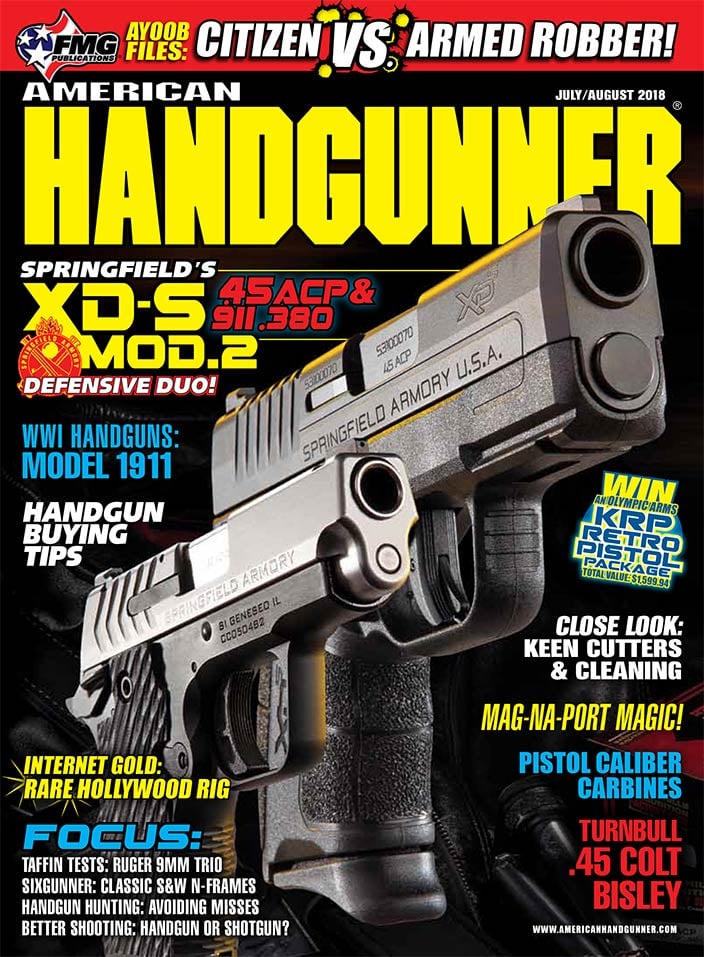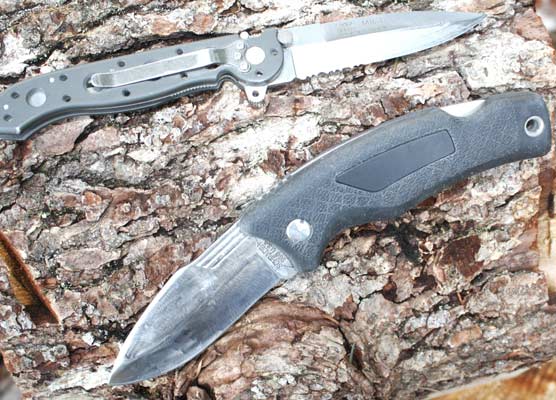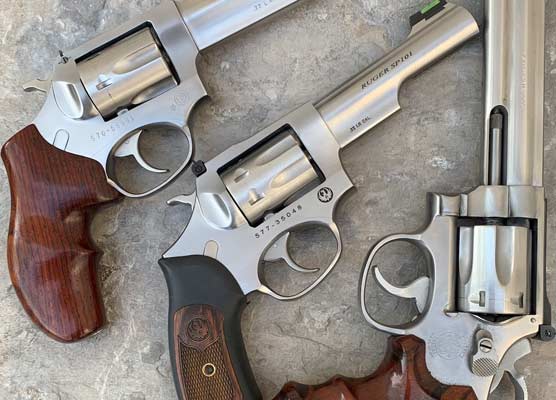Shooter Beats Gunmen: The Bryan Lee Incident
Situation:
The armed robbery team comes in shooting, and one wounds your mother. Shooting the SOB in the face with a .45, and putting a couple of bullets in his accomplice, solves the problem.
Lesson:
Training and practice pay off in the moment of truth. Memory of critical incidents isn’t like a tape loop. The incident isn’t over when the gunfire stops.
January 2013, Madera, California. Bryan Lee and his mother Sophia have kept the family-owned drugstore open late to fill an emergency prescription for a mother with a sick child. After the lady picks up the meds Bryan ushers her out the back door and leaves it unlocked for the few minutes it’ll take to finish up for the day. It’s a shortcut he will come to regret.
Ambush Attack
Bryan is about to finish closing when he hears footsteps. He looks up, and the first thing that registers in his mind is a black ski mask. There are two big men moving toward him, and toward his mom who’s behind him. The one in the lead looks to be about 200 pounds, and the one behind him, more like 300. They’re dressed all in black, pants and bulky sweatshirts as well as the ski masks. And he also sees a pistol.
Without a word, the gunman in the lead opens fire. Bryan reacts swiftly. His left hand lifts the front of his shirt as his right hand goes for what the shirt conceals: a 1991A1 Colt .45 pistol. Moving toward cover under fire, Bryan correlates the bulky sweatshirts with body armor even as his pistol comes up into a two-handed Isosceles stance. Pie-slicing around the corner of the tall counter behind which he has taken cover, and with his two huge antagonists only feet away, he shoots from right to left.
A second or so later, the 200-pounder has fallen heavily to the floor, landing on his back, and the other has turned and is running out the back door through which he’d entered. Not seeing a gun in the man’s hand at the moment, Bryan decides not to fire at him again.
He turns toward the fallen gunman and following his training shouts commands: “Don’t move! Don’t touch that weapon!”
But the downed man sits upright and pulls his ski mask off his bleeding face. Lee repeats the command. Again, the wounded thug ignores the words, and crawls toward the back door. His hands are visibly empty, and he does not reach for the black semi-automatic pistol he’s dropped, so Bryan does not fire. His gun up and ready, Bryan watches as the man crawls out the door. It’s then Bryan realizes his 70-year-old mother has been shot.
Aftermath
Sophia Lee had been shot through and through the thigh with a .45 caliber bullet, which had fortunately missed the femur and the femoral artery. His own .45 still in hand, Bryan performed a tactical reload, swapping his depleted seven-round magazine with a 10-round mag.
Seeing his mom was safe for the moment, Bryan followed the principle of securing against further harm before attempting to treat the wound. As he moved to the back door to lock it, he realized two things: He’d need the right hand holding his Colt .45 to get the keys out of his right-side trouser pocket, and he’d need a gun in his hand in case the gunmen returned. He drew his backup gun, a Smith & Wesson Model 642 Airweight .38 Spl., from its pocket holster and held both guns on the door for an instant, then on-safed and holstered the Colt.
As he approached the portal he swept the red dot of the J-Frame revolver’s Crimson Trace LaserGrip across the pavement outside the door, hoping it might serve as a deterrent, and kept the gun in the left hand as he locked the door with his right. Then, methodically, he put the keys away, drew the Colt and re-holstered the S&W.
Now his left hand was free to call 9-1-1 to summon police and paramedics. Mindful of his training in how to avoid being mistakenly shot by responding officers, he stayed on the line until the dispatcher told him police had arrived and he’d seen the emergency lights from their patrol cars through the window. His .45 was holstered and concealed again and his hands were in plain sight when he first came into view of the police officers.
Police quickly found the gunman who had crawled from the store. He’d made it a block away. Unresponsive when police got to him, he was pronounced dead upon arrival at the hospital. The accomplice who had fled on foot was later arrested at his girlfriend’s home in Fresno, where he was found to be suffering from two gunshot wounds to the leg inflicted by Bryan Lee.
Mrs. Sophia Lee was treated for the gunshot wound to her leg and released that night. She returned to work the next morning.
Legal aftermath? Long story short: The police and the district attorney knew a justifiable shooting when they saw one.
The two masked thugs turned out to be bangers from a southwest Fresno clique calling itself The Dog Pound Gang. Police intelligence soon gathered the fact the gang had put out a contract on Bryan Lee. For a period of weeks, the local police assigned officers from the SWAT team to surveil the pharmacy and keep an eye on Bryan and his family, and Bryan himself kept an AR-15 in his car. Eventually, the gang found other things to focus on, and the threat dissipated.
Near-death experiences affect us all, and one virtually universal element is sleep disturbance, manifested by insomnia, erratic sleep patterns and nightmares. The adrenaline from a fight-or-flight response doesn’t go away when we’re done with it. Bryan Lee experienced sleeplessness and nightmares for some time after the shooting. Some of the dreams were particularly vivid.
Reconstruction
Lee had perceived both men to be firing at him and his mother. The dead man’s weapon turned out to be a full-size, eleven-shot .45 ACP, which tracked to a burglary in Bakersfield. Because some of the criminal’s shots had gone through multiple walls and possibly ricocheted, an exact count of his shots fired wasn’t established, but it was narrowed down to at least eight and as many as 10. The only one of the criminal’s bullets finding its way into innocent flesh was the one hitting Bryan’s mother in the thigh.
No weapon was recovered that could be tracked to the surviving robber, and after his arrest he insisted he was unarmed and had fired no shots. He maintained he was shocked when his accomplice murderously opened fire without reason. Whether or not true, Lee’s perception he was under fire by both men and his actions in responding accordingly fit the reasonable man standard, and neither the police department nor the district attorney’s office seem to have had any problem with Bryan’s response.
Bryan Lee had fired five 230-gr. hollow points and scored a hit with every one of them. The surviving robber had been hit twice in the left leg by the pharmacist’s first two shots, one thigh and one calf. The other had been hit three times: In the thigh near the scrotum, exiting the buttocks; in the abdomen; and the fatal shot square in the face just to the right of the nostril. This was the shot dropping him and ending the gunfight.
It’s no surprise this hit dropped the man like the proverbial rock: What does surprise everyone who analyzes this incident is Bailey was able to sit up and crawl away moments later. The answer lies in the angle of the wound track.
It is believed he was beginning to fall forward in response to the first two hits when this bullet struck. With the head erect, we would expect this bullet to track right into the medulla oblongata, deep brain, for an instant and permanent “lights out.” In this case, the incapacitation was instant but not permanent. According to the autopsy, the wound tracked downward five degrees toward the rear, and twenty degrees right to left. It shattered the upper mandible — some at the scene reported seeing bone fragments on the floor of the pharmacy where Bailey had fallen — and what the forensic pathologist described as “a conspicuously large mushroomed bullet” bumped the cervical spinal column before lodging at the carotid artery. It was apparently hemorrhage from the carotid that actually killed him.
One would expect a blow like this to a cervical spine, even if it didn’t shatter bone or strike the spinal cord, would cause paralysis and collapse. It probably did … short term. It is uncertain whether Bailey got a block away under his own power before he went down for the final time, or whether he was picked up by accomplices in a getaway car and then dumped where he was found. Bryan later learned from police Bailey had sent a text from his phone in the time between his escape from the pharmacy and his final collapse, though he was never told the contents or recipient of the message. Carotid hemorrhage cannot be expected to cause instant unconsciousness at the moment it begins.
Memory And Perception
Our leading authority today on such topics, Dr. Alexis Artwohl, reports roughly 84 percent of gunfight participants experience some sort of auditory exclusion. This was true of Bryan Lee. He told me he heard the very first shot fired by Bailey as extremely loud, but all subsequent gunfire including his own seemed muted. He was aware of it, but it didn’t sound even as loud as gunfire on the shooting range when heard by the unprotected ear from behind the firing line.
Dr. Artwohl’s study also found 79 percent of survivors reported tunnel vision, and 62 percent of them experience tachypsychia, a sense of time going into slow motion. Brian was apparently not affected by either phenomenon during the shootout. He recalls a wide-angle perception of what was going on in front of him and his .45, and he remembers it in “real time.”
This real time went by quickly. Bryan estimates on his side of it, it may have taken as little as four seconds. A second to realize what was happening and begin to react; another second at least to clear the gun from the Milt Sparks Summer Special inside the waistband holster under his shirt; perhaps another second moving to a position of advantage where he had cover and could enfilade his opponents in a fatal funnel; and finally, about a second to fire all his shots in a rapid, uninterrupted sequence.
During the string of five shots, he remembers consciously thinking they looked as if they were wearing armor, so he had to go high and low, and this turns out to be where all his shots did hit. He shot right to left because he was shooting around the right side of his cover, and the left leg of Harris behind Bailey was the first target coming into his line of sight. They turned out not to be wearing armor, but given they were barrel-chested and wearing big, loose sweatshirts, Lee’s perception was reasonable under the circumstances, and his shots did indeed go high and low as intended.
He experienced an interesting memory phenomenon. Experts on witness perception (such as Dr. Elizabeth Loftus, the most prominent authority in this field) define what they call “flashbulb memory” or “snapshot memory.” This is how Bryan Lee described his recollection of the actual moments of the gunfight to American Handgunner.
“When I fired, my perception of things changed from video to stills,” he said. “(In) my snapshot picture of Bailey and Harris, their appearing to wear body armor and the anxiety it caused me, and my five-round burst of fire happened simultaneously, all within one second. So much needed to be done in that one second, it was more than my conscious brain could process. That the situation resolved itself as well as it did seems incredible. Jim Cirillo stated in life threatening situations, the subconscious mind could take over from the conscious mind and perform tasks without making errors. I believe this is what happened here.”
Preparation
Bryan Lee had become an accomplished handgunner long before this incident. He had taken a 40-hour training class in California, and shortly thereafter two days with the legendary Jim Cirillo. The gear he was wearing on the night of the shooting had been his everyday carry for many years. In that 40-hour class in 2000, he’d come in top shot among the students with a perfect 300 out of 300 score, using the same pistol he would use to save his mother’s life and his own 13 years later.
A longtime NRA member, Bryan had competed successfully in bulls-eye pistol and IDPA competition. His favorite recreational gun sport was slow-fire pistol shooting at 25 and 50 yards, which helped to ensure his deadly accuracy and 100 percent hit factor when he shot it out with the armed robbery team at a distance of mere feet.
He had prepared himself mentally and had kept his skills sharp. All this paid off when lives were on the line.
The only mistake he made was not locking the back door once the legitimate after-hours customer with the emergency errand of mercy had departed, and he still kicks himself for it. It was a mistake he never made again.
He later told me, “I’ve thought about it over the years. Even if I had relocked the door, they must have been waiting outside for us. There would have been an attack in the parking lot. I’m actually kind of grateful it happened inside where it was well lit. I’ll never know for sure.”
By both character and profession, I know Bryan Lee as a calm, cautious, meticulous man. Those characteristics came into play the night of the shooting. His judgment of when to shoot cannot be faulted; there is no reason to believe anything other than he and his mother would both have been murdered if he’d not drawn, returned fire, and swiftly and decisively won the gunfight.
Bryan himself says, “For me, I think the most important lesson I learned that night, and during my other attempted robberies, is awareness is vital. If I hadn’t heard those footsteps and looked up, believed what my eyes were telling me, and chosen to act, my mother and I surely would have died. In fact, it was so close we should probably both be dead. The other most important lesson I learned that night is accuracy is absolutely king. Even though my gun and ammunition didn’t result in spectacular results wound-wise, the shot placement is what stopped the attack cold. For that I’ll be forever grateful.”
Likewise, I can find no fault with him holding fire when he did: Not shooting the fleeing robber when he ran out the door when he couldn’t be sure if he was still armed, and not shooting the dying robber when he crawled away without reaching for his dropped, stolen pistol. Had he done so, strong arguments could have been made on his behalf within the totality of the circumstances, but acting as he did probably saved him and his family a lot of grief after the fact.
Bryan’s performance, in my opinion, is an example to all responsibly armed citizens. Bryan called me shortly after his shooting. Jim Cirillo had sadly passed away by then, but I’m sure Jimmy would have given our student the same “A” grade for his performance in the gunfight I did.




